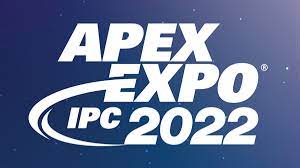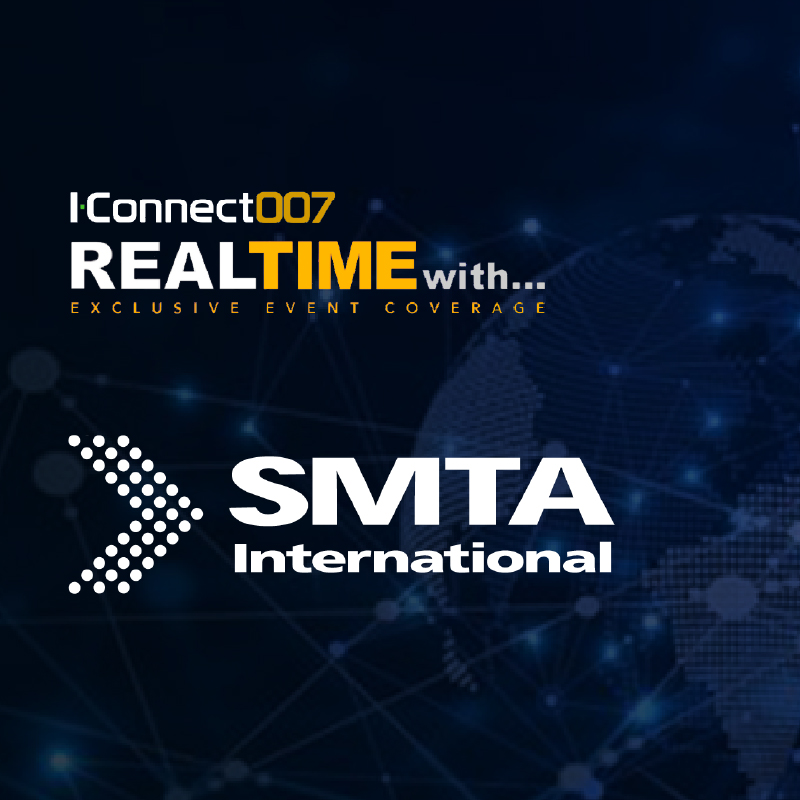Iain Hazlewood from WNIE TV talks with Sean Langbridge

IH: Hi, we’re at Productronica 2021. We’re at ‘What’s New In Electronics TV’. I’m joined by Sean, from CyberOptics.
SL: Iain, good afternoon.
IH: Thanks for coming on again. Great to be back together with everyone again. It’s been a strange —
SL: It certainly has.
IH:–few years to say the least. So was the show a given for you all the way along? Did you say, “We’re going to do this?” or has it been —
SL: No, not at all. It was only decided, the final decision was about eight weeks ago.
IH: Really?
SL: Yes. All year we were thinking, “Should we, shouldn’t we? Will there be customers visiting? Would we be allowed to exhibit?” So we were very unsure up until about eight-ten weeks ago, and then we decided to exhibit.
IH: Take the plunge.
SL: Yes, we did. And actually, from this morning, I’m really glad we did. We had quite a good presence from the booth.
IH: Have you had customers who specifically say, “We’ll see you here?”
SL: Yes. We get the usual combination of booked appointments and then there are customers saying, “We’re going to the show, we don’t want a fixed schedule, we’ll just come to the booth and see you whenever.” So, we’ve got a combination of the two.
IH: Do you think this is going to be the kind of thing moving forward? That we’re going to be doing a bit of a hybrid thing and that some people will be happy to do stuff remotely?
SL: Yeah, I think the hybrid working relationship will continue, for sure. It’s great to be out in exhibition live again and meeting people, press, in the flesh. I mean, I’ve really missed that from a personal point of view and a business point of view. So it’s great to get that back. But I don’t think we’ll say goodbye completely to the Zoom and Team videos. I think they do have a place in the business side.
IH: Yes, do you think you can get the same handle on a customer’s business and what they really want over a screen?
SL: No, definitely not. I think with the Team and the Zoom videos, of course, they are very matter-of-fact, very focused on the details, and you don’t get that personal relationship that you would build up in a face-to-face. You don’t get the water fountain kind of chats, where you may get some additional information, which you don’t normally get on the video call.
IH: Do you find that talking around the customers’ requirements, you’re sometimes dealing with, “There’s what they want and there’s what I need,” and you kind of have to make them meet somewhere in the middle?
SL: Yes, absolutely, I think that’s the key to a successful relationship, understanding a customer’s needs. Yes, absolutely.
IH: So, what’s new at CyberOptics?
SL: There are lots of things new, in terms of what we have here, at the exhibition. We have a 3D AOI Solution, the SQ3000™. And we’re exhibiting or presenting unique CMM software. So, we’ve converting what would be a traditional 3D AOI system into a high-speed CMM, Coordinate Measurement Machine. So, this can be for inline measurement of the SMT electronic. Or, alternatively, for plastic parts, metal parts, Mini or Micro LED, advanced applications or wire bond. It has a very flexible measurement capability, it is very accurate, very repeatable with some unique metrology measurements at high speed – so we’re demonstrating that at the show.
IH: Fantastic. How long does that take to develop?
SL: Quite a long time.
IH: Yes, it’s a lot of work, isn’t it?
SL: Yes, we had the head start, because we do have a metrology business within CyberOptics. So we do have a lot of metrology expertise, both for the sensor and the software level. So, we did have a head start.
IH: Right.
SL: But it did take quite a while, yes.
IH: That’s fantastic. So, it’s literally starting to be used —
SL: Yes.
IH: There are some customers now?
SL: We have many customers utilizing it today, yes. Not just for electronic manufacturing but for metal parts, plastic parts, goods inspection, quality control, yes.
IH: Fantastic. So, is something like that — they have a learning curve, with something — it’s so new, and takes in disparate elements of the production.
SL: I think it would be a learning curve for a traditional SMT engineer or operator because it is metrology, and historically, they have been separate, shall we say, engineering solutions.
IH: Yes.
SL: You have your metrology engineer, your SMT engineer. So, they have been different solutions. And we are merging the two which customers highly value. So, yes, it is a little bit of a learning curve, but not so much.
IH: Do you find, with the customers though, that sometimes work descriptions, that people have to wear two hats a lot of the time as well?
SL: Yes, sometimes more than two.
IH: Was your development process hampered at all through the COVID thing?
SL: I don’t think so.
IH: Did you have to do it remotely? How did you —
SL: Yes, I don’t really think so. I think communication has been quite good though, with the Teams and the online meetings. I would say, if anything, it’s been enhanced —
IH: Oh, really.
SL: Really, we probably had more meetings. So, it’s probably been more communicative, I think.
IH: That’s good.
SL: Yes, it hasn’t really hampered it. Well, from my standpoint, because I’m not the engineering director. He may have a different opinion.
IH: Moving forward, the industry is in a buoyant state with automotive electrification coming through, and more electronics on a dashboard, across not just automotive, in everything else, defense, all of the different sectors.
SL: Yes.
IH: So surely, I guess for your customers, those efficiency improvements, can be the difference between getting contracted or not getting contracted.
SL: Oh, right.
IH: Or fulfilling, or not fulfilling.
SL: Yes, absolutely. You’re absolutely right, there are real growth areas, within automotive, advanced applications. We see a lot of investment now in advanced packages, and we look at the recent semiconductor investments, there are huge investments going on because of the chip shortages, of course, which we’re seeing globally. So yes, it’s a good time to be in electronic manufacturing, I believe, if you’re in state-of-the-art manufacturing for advanced components etcetera. Yes, sure.
IH: Do you think the industry is changing as well? That there is an acceptance of doing everything together with software, throughout factories, throughout the production process? We’ve talked about this for years, IoT and the various different protocols that can come through, and now it’s actually come together.
SL: Yes.
IH: Or even small EMS companies or manufacturers or whatever, right up to large ones. Isn’t it? Do you see a difference?
SL: I think most manufacturers are looking to automate as much as possible, where it makes sense to automate and to develop efficiencies in their manufacturing process. And I think the best answer to your question would be – I remember 15 years ago at Motorola, they were talking about, “Lights out capable,” so you could turn the factory lights out and the production would continue to go on with no people. I have yet to see that. I mean, that just hasn’t happened.
IH: Yes.
SL: But I think most companies want to improve efficiencies, they’re interested in AI, to see what that can provide them because that can automate some of their processes. We’re starting to see a lot of manufacturers, OEMs, talk about AI embedded in their products.
IH: Right.
SL: Where it’s automated inspection, for example. Making some simple decisions, whether it be Auto Programming, Auto Define or other capabilities in our AOI software, that kind of thing. We’re starting to see AI a little bit in AOI which is good, and that needs more development, but “lights out capable”, we’re not quite there yet. You can turn some of the lights out, but not all of them.
IH: It is funny, isn’t it though, how we’ve had catchphrases, they all come and go don’t they, but elements of them keep going.
SL: Yes.
IH: And it all slowly ties itself together. But, have you got customers that come to you with their qualms, their real-world concerns, they need to be efficient, they need to get more orders and they need to fulfill those orders more quickly, so, they can make a profit, that’s the bottom line.
SL: Absolutely.
IH: And that probably hasn’t changed in 15 years, has it?
SL: I mean, speaking specifically from an inspection point of view, it hasn’t changed at all in 20 years. They want to inspect the product as quickly as possible, as effectively as possible, with no errors, and if they can do that without a human being, then fantastic. But they can’t quite get there, they still need some human interaction. But the way we’re developing the products, in terms of ‘Auto Set-Up’, ‘Auto-Define’, they’re starting to get to a point where the system can be stand-alone or left alone for a good while, but we’re not quite at the complete automated setup yet. But we’re getting there.
IH: Well, it looks like a busy show. I hope it’s a successful one for you.
SL: Thank you.
IH: Hope you have several more coming up.
SL: Hope we can attend them in person, as well.
IH: Yes, exactly. Thanks for your time, Sean.
SL: Thanks, Iain. Good to talk.
IH: Good to see you.
 Back
Back
 Back to News
Back to News








